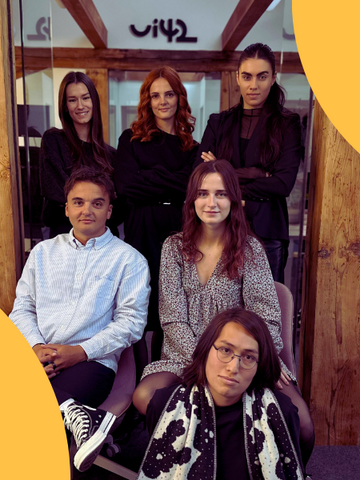Brainstorming
What does it mean
Brainstorming is a creative technique that allows for the generation of a large number of ideas in a relatively short time. It is a process in which individuals or groups of people come up with a multitude of ideas without immediately evaluating their quality or feasibility. The goal of brainstorming is to encourage the free flow of thoughts and come up with innovative solutions or approaches to a particular problem.
More info
Brainstorming can take place individually or in groups. The key is to create a relaxed environment where all ideas are considered valuable and no one is criticized for their ideas. This approach eliminates the fear of wrong answers or failure and allows people to think freely.
Steps of Brainstorming
1. Problem Definition: At the beginning, it is necessary to clearly define the topic or problem you want to solve.
2. Recording Ideas: During brainstorming, every idea is recorded, no matter how crazy or unusual it may be.
3. No Criticism: At this point, no criticism or evaluation of ideas is allowed.
4. Idea Development: Finally, the ideas are reviewed and those with the greatest potential are selected.
Brainstorming Techniques
There are several techniques that can help with brainstorming. Here are some of the most effective:
Classic Brainstorming
All team members freely propose ideas without restrictions. Every idea is recorded and later reviewed.
Brainwriting
This technique involves participants writing their ideas on paper instead of contributing verbally. After a few minutes, these papers are exchanged so they can develop each other's ideas.
Mind Mapping
Using this technique, ideas are displayed visually. The main idea is recorded on paper, and other related ideas branch out around it. This approach can reveal connections between different ideas that might otherwise be overlooked.
SWOT Analysis
This is a systematic approach where the strengths, weaknesses, opportunities, and threats of a given idea or project are identified. SWOT analysis can be useful for uncovering new ideas or areas for improvement.
Role-storming
Brainstorming participants temporarily take on the role of someone else, such as a customer or competitor, and propose ideas from this perspective. This approach can bring new perspectives.
Round-robin Brainstorming
Each participant has a predetermined time to present ideas. This procedure prevents one person from dominating and gives everyone space to contribute.
Six Thinking Hats
This technique by Edward de Bono requires brainstorming participants to think from different perspectives represented by colored hats. Each "hat" represents a different way of thinking, such as optimism, criticism, creativity, and logic.
Advantages of Brainstorming
- Encouraging Creativity: Brainstorming encourages unrestricted thinking, leading to the creation of new and innovative ideas.
- Improving Collaboration: Team brainstorming promotes teamwork because everyone has the opportunity to contribute and develop others' ideas.
- Quick Solutions: Brainstorming allows for generating many ideas in a short time, which can be useful when you need a quick solution to a problem.
Brainstorming is an important and effective technique that supports creative thinking and problem-solving. Whether it's an individual or a team, the proper use of this technique can lead to new and innovative ideas that might otherwise be overlooked. Utilizing various brainstorming techniques, such as brainwriting, SWOT analysis, or six thinking hats, can enrich the process and bring new perspectives.
Latest news
Contact us
Don't miss out on the latest news from the world of UX, programming, analytics, and marketing.











